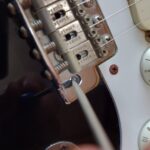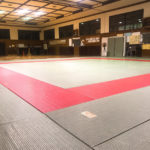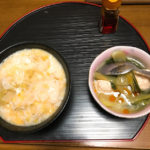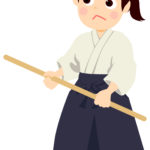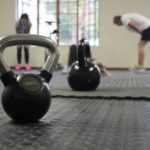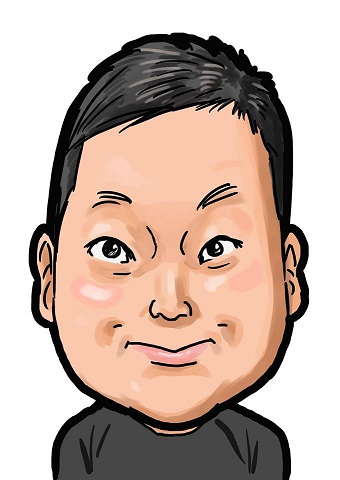今週は金土と合気道の稽古に行ってきました。
仕事の現場が変わって間もないので早く帰宅することが出来るからです~~(*´▽`*)
今週はどんなことをしたのか振り返ってみます。
fa-arrow-circle-rightこの記事は稽古内容を自分なりに振り返るものです

稽古内容 その1 ~体捌き~
いつも指摘されるのですが、体捌きがまだまだ出来ていない。
上半身の腕の動きに頼りきりになることが多いです。
もう5年目になるけど、いい加減に体捌きから呼吸力が生まれることを習得しないといけないなぁ。
体捌きするとどうしてもフラつくことがあると思います。
そんな時は、ちゃんと「手を腹につける」
これで結構安定感が増します。
初めのうちは手だけに集中するから安定しないのです。
稽古内容 その2 ~先から動く~
例えば、「片手を取らせて相手を崩す」動きについてです。
写真があれば分かりやすいけどなぁ💦
自分の右手を相手の右手で取らせて、そんまま前に押し出して倒す感じの技?です。
相手にガッチリ取られると、押しても引いてもびくともしません。
ちょっとでも相手が押してこようものなら、自分は羽交い絞めみたいになってしまいます。
コツは当然のごとく「力を抜くこと」です。
腕だけでなんとかしようとすると「力比べ」状態になります。
そこで力を抜くと、相手のガッチリ握った力は自分の力となります。
そうなると腕を軽く動かすだけで相手が簡単に崩れてくれました。
試しに、相手の腕を取って、
・そのまま突き進む
・下に引っ張り落とす
・上に突きあげる
・手前に引っ張る
これらを先生に試したら、全部力を抜いた感じで崩されてしまいました。
砂泊大先生が言われていたそうですが、「先から動く」のが大事なようです。
先、というのは「取らせたポイント」みたいなものです。
この場合、手首付近を取られてるから手首付近が「先」となります。
これが力が入ってると、肩や肘から動こうとしますので、相手に止められてしまいます。
今度からこういう練習してる動画を撮ろう。
いいカメラはないものか。。。
稽古内容 その3 ~呼吸力の練習~
合気道している人の永遠のテーマだと思います。
「呼吸力」です。
私の道場(教室)の場合、稽古の初めに呼吸力の練習をします。
やり方は、
・相手に腕を取らせて、自分側に引き寄せる
・相手に腕を両腕で取らせて、関節を極める
・相手に腕を取らせて、相手側にどんどん押していく
見てるととても「地味」な練習風景なのですが、これこそが合気道の大きなゴールかなと思います。
5年もやってますが、まだまだどれも出来ません。
どうしても「引こう」として、肩や肘が動きます。
受けてる側も、「あ、肘から引いてるな」とか分かるようになります。
これも「力を抜く」ことが重要になってきます。
全然できなくて「諦めた」時、ふと力が抜けて上級者の方を崩したりできることがあります。
あの感覚を忘れたくないですね~~~
まとめと感想
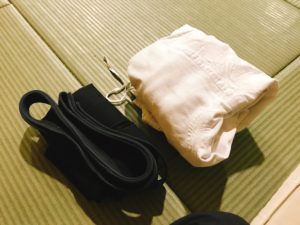
今週は新入会員のお子さんもおられて、比較的初心者向けの内容でした。
でも時折投げ技もあり、結構疲れました。
指摘されたことのまとめとして。
・体捌きが中途半端
・受け身を取るのが少し早い
体捌きそのものが中途半端ですから、呼吸力には程遠いですね。。。
受け身は特に「前受け身」が少しタイミングが早い為、肩口から突っ込む形になってました。
呼吸力に関しては、徐々にですが「先から動く」ことが出来てるようになってきました。
砂泊大先生は「体捌きを身につけることで呼吸力を習得した」そうです。
確かに体捌きをしっかりやれば相手は簡単に崩れて、大した力も必要としないんだなぁと感じました。
そして今年の演武会はみんなで色々考え合ってやろうということになってます。
どんなことしようかな?
そのためにはどんな練習をしたらいいかな?
そんなことを考えてる時間がとても楽しいです。
これから暑くなってきます。
どうか熱中症に気を付けて皆さん頑張ってください。
以上、たいこでした!



